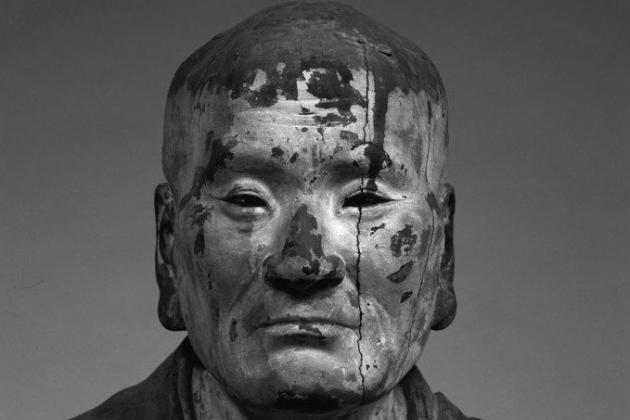
Detail of Unkei (d. 1223), Mujaku bosatsu (Asanga), National Treasure; Kamakura period, ca. 1212. Wood with polychromy and rock crystal eyes. Kōfukuji, Nara.
807 Schermerhorn Hall
Following the destruction of the great temples of Nara in 1180, a fledgling group of sculptors, which came to be known as the Kei school, was thrust into the center of artistic endeavors in Japan. Although previously active in the restoration and replacement of early works in the Nara region, in the new commissions for Kōfukuji and Tōdaiji they sought not only to be faithful to the earlier statues that had been destroyed, but also to make images that reflected the overriding contemporary millenarian beliefs of the Age of the End of the Buddhist Law. Devout believers themselves, the members of the Kei school frequently sculpted works that manifested their personal religious convictions. These lectures will explore the transformative role the Kei school and its successors played in Japanese sculptural practice.
February 13, 2020
“Who Were the Nara Busshi?—Sculpture in Nara in the 11th and 12th Centuries”
February 20, 2020
“Unkei and the Formation of the Kei School”
March 5, 2020
“Kaikei, Chōgen and the Early Pure Land Community”
March 26, 2020
“Zen’en, Eizon, and the Ritsu Community”
April 2, 2020
“The Kei School at the End of the 13th Century”
